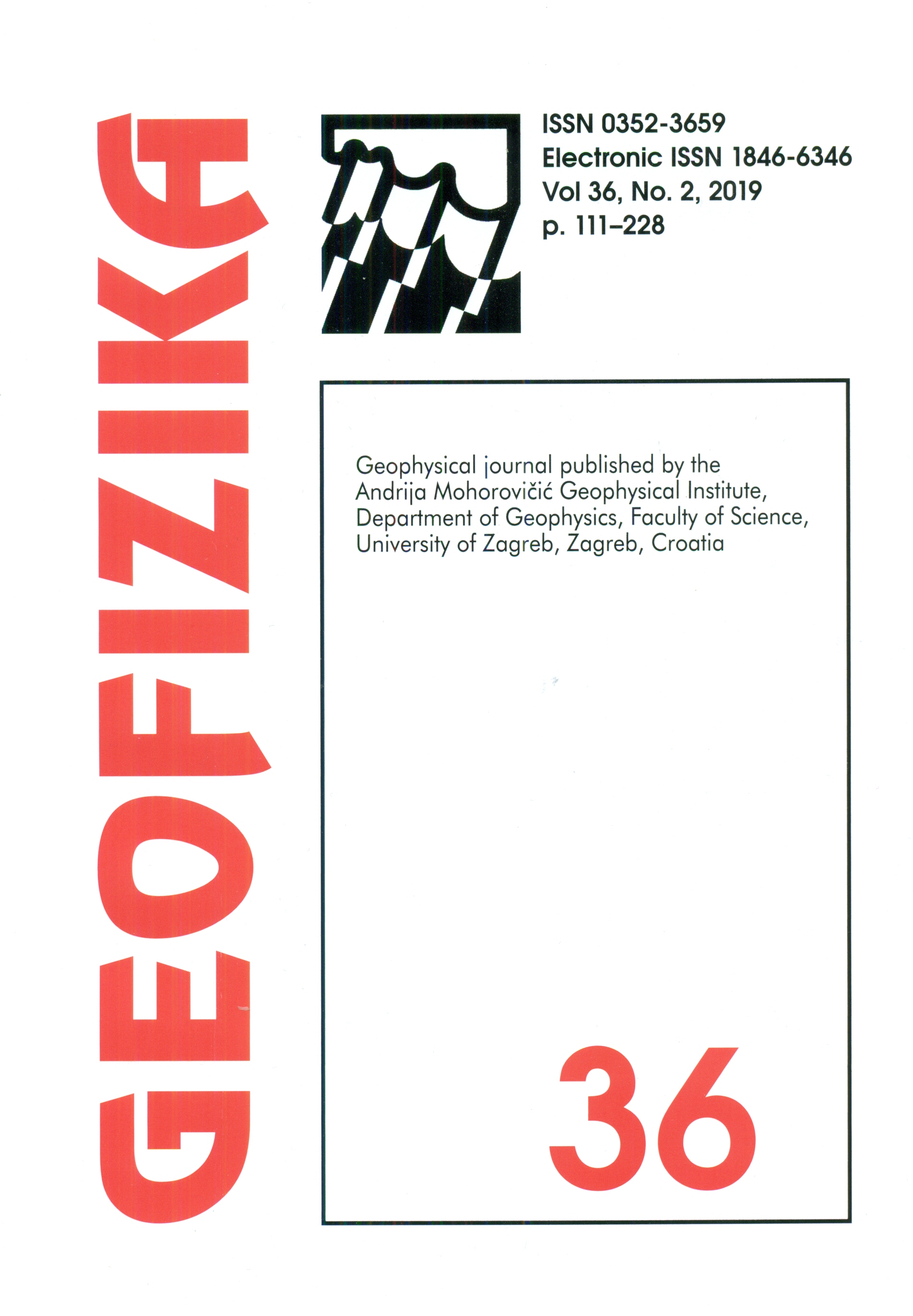Regional analysis of wind velocity patterns in complex terrain
DOI:
https://doi.org/10.15233/gfz.2019.36.6Keywords:
wind towers, wind energy, wind resource assessment, detrended fluctuation analysis, wind regime, autocorrelation analysis, detrended cross-correlation analysisAbstract
Wind energy is a weather and climate-dependent energy resource with natural spatio-temporal variabilities at time scales ranging from fraction of seconds to seasons and years, while at spatial scales it is strongly affected by the terrain and vegetation. To optimize wind energy systems and maximize the energy extraction, wind measurements on various time scales as well as wind energy forecasts are required and needed. This study focuses on spatio-temporal characteristics of the wind velocity in complex terrain, relevant to wind energy assessment, operation, and grid integration, using data collected at 11 towers ranging from 40 to 80 m tall over a 12-year period in complex terrain of western-central and northern Nevada, USA. The autocorrelation analysis, Detrended Fluctuation Analysis (DFA) and Detrended Cross-Correlation Analysis (DCCA) showed strong coherence between the wind speed and direction with slowly decreasing amplitude of the multi-day periodicity with increasing lag periods. Besides pronounced diurnal periodicity at all locations, statistical analysis and DFA also showed significant seasonal and annual periodicities, long-memory persistence with similar characteristics at all sites and towers with a relatively narrow range of the Weibull parameters. The DCCA indicates similar wind patterns at each tower, and strong correlations between measurement sites in spite of separations of about 300 km across the towers' setup. The northern Nevada area exhibits higher wind resource potential and higher wind persistence compared to the western-central region. Overall, the DFA and DCCA results suggest higher degree of complementarity among wind data at measurement sites compared to previous standard statistical analysis.
Downloads
Published
Issue
Section
License
Copyright (c) 2021 Geofizika journal

This work is licensed under a Creative Commons Attribution-NonCommercial 4.0 International License.

